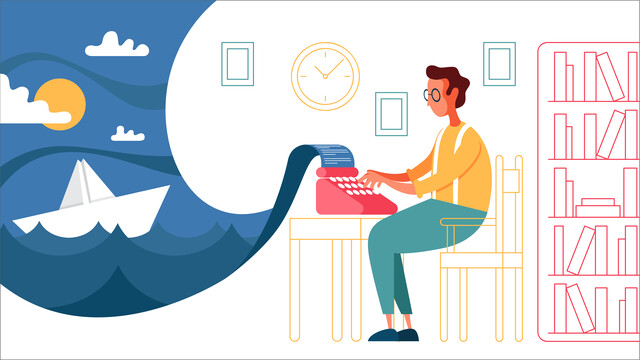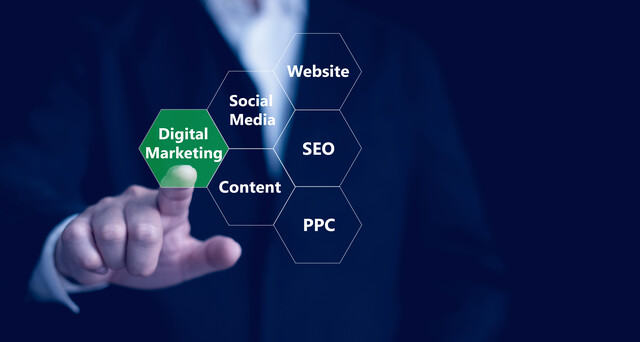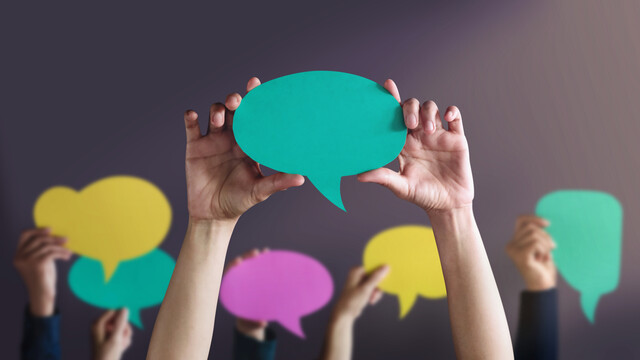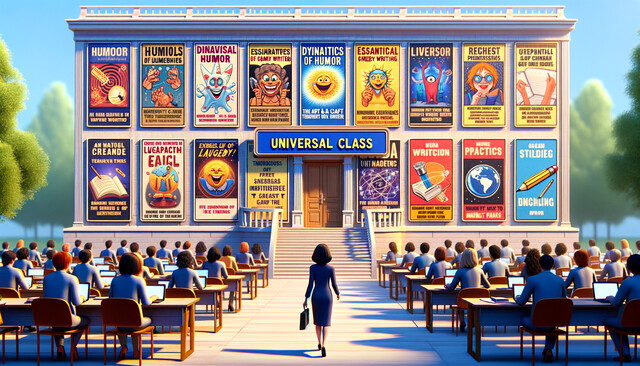By definition, copywriting is the writing of advertisements or publicity materials. Copywriters write such advertisements and materials with the purpose of generating leads, sales, or creating brand awareness. A copywriter's job can consist of more than writing, however. It can include research of the product, the competitors, and the consumers who will view the ads. These consumers are called the target audience.
Job Description of a Copywriter
Copywriters typically work within an ad agency or independently as a freelancer. Their job is to work with clients to develop ideas and messages that will produce effective advertisements to sell products or services. While the art director in an ad agency will deal with the visual aspects of a campaign, such as artwork, the copywriter focuses on the written copy. The job of a copywriter is to create messages, slogans, catchphrases, etc. for printed advertisements. In addition, they write copy for online advertising, radio advertising, and TV commercials.
Being a copywriter is about a lot more than just writing copy. Along with the creative process, you must also be able to work as part of a team, conduct research, put together ideas, and etc.
Listed below are some of the responsibilities of a copywriter:
-
Meeting with clients and determining their needs.
-
Developing concepts and ideas created to meet the client's needs.
-
Presenting ideas to clients.
-
Learning about a client's products and services, in addition to the target audience and competitors.
-
Writing copy that's clear and persuades the target audience to take action.
-
Updating online media.
-
Proofreading copy.
-
Revising and rewriting copy after receiving feedback from the creative director, client, or account team.
-
Working on campaigns from concept to completion.
-
Working on more than one campaign at the same time.
-
Working on campaigns with tight deadlines.
-
Monitoring campaigns for effectiveness.
Salary of a Copywriter
The salary of a copywriter depends greatly on the experience of the copywriter, as well as if the copywriter works within an agency or independently as a freelancer. Geographical location also factors into the salary. According to Payscale.com, the median salary of a copywriter as of January 2016 is $45,648, while Glassdoor.com lists the current average salary as $55,000. Junior copywriters will make less than senior copywriters. Copywriters who work within an agency may make more or less than a freelancer, depending on the size and volume of clients the freelancer can take on.
Job Qualifications
If you look at job listings for copywriters, you'll find that a lot of ad agencies nowadays prefer to hire copywriters with either a degree in marketing or communications � or with three to five years' experience. However, neither of these things are a requirement to get started. The most important thing is that you can write effective copy. We'll teach you the basics of writing effective copy, then teach you how to get started working as a copywriter too.
That said, when hiring a copywriter, these are the qualifications that ad agencies and other companies look for in a copywriting candidate:
-
A strong portfolio. A portfolio contains samples of your past work. A strong portfolio shows that you can write clear, concise and persuasive copy.
-
A background in advertising, public relations, or journalism.
-
Impeccable English language skills.
-
Research skills.
-
An eye for detail.
-
Creativity.
-
The ability to work well as part of a team.
-
The ability to work well under pressure.
-
An interest in popular trends, as well as popular tends in advertising.
-
Strong interpersonal skills.
When interviewing for a job as a copywriter, you'll want to be able to show your future employer that you possess these qualifications. Along with your resume, you can use your portfolio to showcase your skills by discussing the different types of copy and the skills you used to create it.
Skills to Focus on Now
There are three things that are essential to being an advertising copywriter. These are things you cannot learn as you go. You will learn how to write adverting copy, but if you are missing any one of these three things, your success as a copywriter will be extremely limited � if you achieve any success at all.
These three things are:
1. The ability to enter and format text into a program, such as Microsoft Word.
2. Good to excellent spelling and grammar skills.
3. The ability to handle criticism and failure.
Let's talk about these three things in depth.
-
Most advertising copywriters today write copy using a word processing program. Microsoft Word is the most popular program around, so it is the one that's used the most. Every piece of copy you write should be written to grab attention. You'll use words to do this, but you'll also learn to use different fonts and font sizes as well. If you're working with a team, you may be asked to enter text into another program such as Adobe Photoshop or InDesign. However, applying formatting to text is fairly universal. If you know how to enlarge or change the font in one program, you should be able to easily figure it out in another.
-
A few typos here and there can be easily cleaned up in the editing process. However, you cannot have misspelled words or poor grammar in the copy that you write. The main purpose of an advertising copywriter is to sell products or services. Not only do the advertisements have to be written in a way to sell products or services, they must also sound intelligent when doing so. Nobody wants to buy toothpaste that is "garunteed to witen teath or you're money back".
-
Whether you're employed as a copywriter by a large company with an in-house marketing team, or you work alone as a freelancer, you're going to have to get used to criticism and failure. You may write an advertisement, and think it's the best you've ever written. Yet, your boss or client may hate it, and tell you to write it again. You may even have to write three or four versions of the same piece of copy in order to get it to where everyone is happy with it and feels it will be effective.
In addition, there may be times when you write an advertisement, and the advertisement brings in zero response. Even as a complete newbie to copywriting, you can figure out that is bad. Companies fork out thousands of dollars on an advertisement. They don't expect outstanding returns every time, but they do expect at least some return on their investment.
When an advertisement that you write falls flat on its face, everyone will look at you! It doesn't matter that there were other members on your team (such as graphics design), or that your boss or client approved the ad and loved it too. You're the writer. They will put that failure on you. You failed to successfully deliver the message. While it doesn't mean you're fired or everyone hates you, it can make you feel like giving up and considering a career in dog walking.
The good news is that you can gain any of these three things listed above, even if you don't have the exact skills right now. You can sign up for a Microsoft Word course or a basic spelling and grammar course. You can even take a course on giving and receiving criticism. In better understanding the value of criticism and truly realizing it's not personal, you can find it a bit easier to take.
The Best Tip You'll Ever Receive
There's one tip we can give you that will make getting started as a copywriter that much easier. It's arguably the best tip you'll get. Here's why. You're not the only person who thinks that maybe they'd like to become a copywriter. In fact, thousands upon thousands of people think the same thing every year, but most never make it past writing articles for a few bucks each.
The reason is this.
A copywriter is a salesperson who sells using the written word. Although a copywriter must be a good writer in order to accomplish this, it's important for you to realize that your ultimate job is to sell. How great your writing is does not matter if your writing can't sell. That said, you should start to think of yourself as a salesperson armed with a keyboard, rather than a writer armed with wit and creativity.
When you're a copywriter, you are not a fiction writer. You are not a poet. Keep the flowery, cutesy language for those things, and forget it when you're writing copy. The cleverest, cute ads are great if you want to show off how witty you are. But guess what? They usually don't do their job. They don't sell!
So, that's your tip. Be a copywriter. Be a salesperson. Do not be anything less � or try to be something more.
The Difference Between an Advertising Copywriter and a Marketing Copywriter
Advertising and marketing are two terms that many people think have the same meaning. In saying that, they think there wouldn't be a difference between the job of an advertising copywriter or a marketing copywriter. Those people would be right, but they would also be wrong.
Advertising is a small slice of the marketing pie. Advertisements are used to reach out to potential customers and bring them in to buy a product or service. You find advertisements in newspapers and magazines. You also find them in Google search results. There are all types of ads. As an advertising copywriter, your job is to write ads that sell, so you may also be asked to write sales letters or landing page copy.
Marketing is the process of preparing a product or service for the marketplace. If you're writing marketing copy, you may create things such as web copy or white papers. You may also spend a lot of time researching the product or service, competitors, and the best way to present the product or service to buyers in the copy you write.
How to Write Advertisements that Grab Attention
We are not going to waste any time by talking about the history of advertising or how marketing strategies are created by marketing directors, as well as their teams. To teach you as much as possible, we are going to delve right in and focus on the most important thing that you need to know: how to write an ad.
Before You Begin: Knowing Your Audience
Before you ever sit down to write an advertisement, you must know who your audience is going to be. You write the ad to that audience. You pick out the benefits of the product based on that audience. The target audience for an ad will tell you what you need to write.
According to BusinessDictionary.com, the target audience is defined as:
"A particular group of people, identified as the intended recipient of an advertisement or message."
One product could have several different target audiences. Certain benefits of the product may appeal to different audiences.
Let's take a look at a natural toothpaste product as an example. This natural toothpaste has a primary target audience, which is people who look for safe and natural products, as well as those who care about the environment. However, there is a secondary target audience comprised of those with medical problems. The natural toothpaste has no side effects and it's safe. It's also the choice of people who suffer with particular diseases. In addition, it's been recommended by physicians who treat people for those particular diseases.
You have to know which audience you will be addressing with your ad. By knowing the target audience, you can craft an advertisement that appeals to them, compels them to read, and persuades them to buy the product.
In this article, we are going to talk about writing headlines. We will talk about using benefits to write headlines. You must use the benefits that offer a solution to the problem your target audience faces. To do this � once again � you must know your target audience.
Introduction to Writing Advertisements
In order to be effective, any advertisement that you write must grab the reader's attention. It must pull them in and make them want to read what you have to say. It doesn't matter if it's a three-line ad with just a handful of words or a three page sales letter. It must grab the reader's attention, and it must do so within a few seconds.
Direct mail marketers who send out sales letters know that they have five seconds to grab a reader's attention. If they fail to grab attention within those five seconds, they know without a doubt that they've lost the reader. Forever.
Remember this. Any piece of copy that you write must do three things in order for it to even have a chance at being effective. The copy must:
-
Grab attention.
-
Communicate clearly.
-
Persuade the reader to take action.
In this article, we're going to focus on #1. We're going to teach you how to grab attention by writing killer headlines.
The Anatomy of an Advertisement
Below is an illustration of the anatomy of an advertisement. It lists each element that's included in an advertisement. Again, it doesn't matter what type of copy you're writing. These parts will always be included.
The visual aspect is any graphics or images used in the ad. The graphics or images used should match the message and be used as a tool to generate curiosity about the message. The message is defined as the copy you write � as a whole.
Next is the headline. The headline grabs the reader's attention so that they read the body � or the copy you've written to sell the product or service.
The call to action contains instructions on what the reader needs to do next. Here are a few examples:
Let's start with the headline.
Why Headlines Are Important
Headlines in ad copy serve the same purpose as headlines in a news article you might read in the paper or online. They grab attention and compel you to read the rest of the copy. They are the first impression that your reader gets. They are the first thing a reader will see, hear, or read. A good headline can help make a sale. A bad headline can chase the reader away.
That said, headlines don't always appear as the large, bold-faced words that appear at the top of an advertisement. In radio ads or TV commercials, they are the first thing you hear spoken. In that regard, a headline is the words you use to make that all-important first impression on the reader. It's what you use to grab attention.
To help you understand headlines and to ingrain their importance in your mind, think about the first time you meet someone new. It could be a colleague, friend, or anyone. As you reach out to shake their hand, you look at their face. You hear their first words to you. They are making a first impression. That first impression will color the way you think of them.
There's no doubt you will worry about the first impression you make on them as well. You'll give them a firm handshake. You'll smile. You will also probably say something interesting or clever so they like you enough to get to know you more.
This is a headline. It's not always seen, but it's always important. It's the most important. If the headline doesn't grab attention, it doesn't matter how good the body of the copy is � or the call to action. You've lost the sale.
What Headlines Must Accomplish to Be Effective
We've already said that a headline must grab the reader's attention to be effective. However, let's face it. If you wrote a headline offering a million dollars to anyone who responds to the ad, that would grab attention and get people to respond. In that regard, the headline would be effective.
But what a headline must do in order to be truly effective is to grab attention so that the reader reads your body copy. For that reason, the headline must grab attention in a way that speaks to the reader about the product or service you're advertising, so that they want to read the body copy and, after reading the body copy, want to follow your call to action.
In other words, a headline must make your reader want to learn more about the product you're selling.
But how do you write headlines like that?
Simple. The headline must use the main benefit � or strongest benefit -- of the product or service to create a solution for the reader.
The reader is reading the headline with the attitude of "what's in it for me?"
Your headline must answer that question by using the benefits of the product or service to create a solution the reader wants. Keep your target audience in mind when writing the headline so you can sell the solution they want � right there in the headline. Your headline should always have sales appeal.
If that doesn't sound simple, let's think of it a different way. Let's say your target audience are business professionals who want to build stronger relationships within their network, as well as expand their network. The product you are marketing is a book by Dale Carnegie. A winning headline could be the title of the book itself: "How to Win Friends and Influence People".
Let's take a look at why that would be such an effective headline.
The reader asks, "What's in it for me?"
The headline answers: "You're going to learn how to make friends which will expand your network, as well as how to influence people and strengthen your network."
What are the benefits that are written into the headline? Make friends. Influence people.
What solution does the headline promise? You're going to learn to make friends and influence people.
|
NOTE: While headlines focus on a main benefit of the product you're selling, you don't name the benefit in the headline. Instead, you write about the solution the main benefit provides. If your product whitens teeth, you wouldn't say in the headline that "ABC product whitens teeth", but you might say "Get Whiter Teeth Without a Visit to the Dentist". |
The Different Things Headlines Can Do
Headlines grab attention and compel readers to read the rest of the copy. That's their main function in an ad, but it's not all they can do.
Headlines can also qualify your audience. Let's say you're running an ad in a newspaper or online. Thousands of people will see your ad, but you only want a certain type of person to respond. Perhaps you are writing an advertisement for XYZ Car Insurance Company. Your ad's purpose is to sell their new multi-policy discount, because they're now offering renter's and homeowner's insurance too.
You want to attract customers who already have their insurance, because you want to use the multi-policy discount to get them to transfer their renter's or homeowner's insurance over to them. You do not want to attract new customers who don't already have XYZ insurance, because your client wants to focus on their current customers only.
You would write a headline like this to qualify your audience:
Let's say you're writing an advertisement for a fiction writing course. However, you only want to attract romance writers.
Do you see how you have qualified your audience?
You can even ask a question to qualify your audience.
A headline like the one above would appeal to readers who have high electric bills and want to find ways to lower them. Notice how it qualifies your audience, whereas the headline below wouldn't.
The headline above appeals to everyone. Who doesn't wish they didn't have to pay an electric bill.
As you can see, the first headline that reads, "Is Your Electric Bill Too High?" qualifies your audience. The second headline does not.
Your headline can also make a complete statement. It can sell the product by offering the benefits of the problem, the solution to the problem your reader faces, and even the brand. In other words, your headline can sell the product. The majority of the time, you'll want to create headlines that can do this. Four out of five people only read the headlines. They don't bother to read the body copy. If the headline appeals to their self-interest, they'll skip to the call to action.
Headlines that make complete statements, again, should contain the benefits and the solution. If the brand name of the product or service is well-known or will influence readers to take action (follow your call to action), then you should include the brand.
Let's look at an example.
1. What's the problem the readers face?
-
High electric bills.
2. What are the benefits listed in the headline?
-
At least a 50% savings.
3. How do the readers get the 50% savings on their electric bill? What's the solution?
-
A solar heater. More specifically, a Tsunami brand solar heater.
The Types of Headlines
As we just learned, headlines can accomplish different things. They grab interest, they can qualify a reader, and they can even make a sale. That said, choosing the right type of a headline for your ad copy can also lend to the effectiveness. You want to choose the type of headline that will be the most effective for the type of product or service you're selling.
Let's take a look at the different types of headlines and when they're the most effective.
How-To Headlines
How-To Headlines grab the reader's attention by promising more information on how to do something.
These headlines promise information and advice to help them accomplish something. In the headlines we're using as an example, the headline is also promising it's easy to do.
If you're ever having problems writing a headline, write a how-to headline. You can remove the how-to later.
News Headline
A news headline can introduce a new product or tell about an improvement.
Question Headline
If you use a question headline, you'll want to be sure the question is one the reader asks him or herself � or that the reader can empathize with.
Testimonial Headlines
Testimonials are from happy, satisfied customers. The best testimonials can make the best headlines if the testimonial sells the benefits of the product or service and clearly shows the solution the product or service offers.
The Reason Why Headline
The reason why headline gives readers the reasons why they should take action and buy the product.
"7 Reasons Why You Should Switch Your Car Insurance Today"
"5 Reasons You Should Join ABC Club Now"
The Command Headline
A command headline tells your reader what to do.
Direct Headlines
Direct headlines get straight to the point. They're brief and state the selling proposition.
Direct headlines are typically used by retailers to bring customers into their stores.
Indirect Headlines
The indirect headline inspires curiosity.
This might be an ad for a store that sells hiking boots. It inspires curiosity, but doesn't go directly for the sale. Its purpose is to inspire curiosity that makes the reader want to read the body copy.
Tips for Writing Effective Headlines
Whenever you write a headline, you want to ask yourself the following questions:
1. Who is your customer? Who is your target audience? You want to write the headline that will appeal to them.
2. What are the benefits of the product? It's important to remember that benefits and features are two different things. Features are surface information about your product, such as specs and colors � or what it does. Benefits demonstrate what a reader can hope to gain or accomplish by using the product. Your readers know what a hair dryer does, but they want to know what they'll gain by using your hair dryer.
3. Why will the reader want to buy the product? "Straighten Your Hair as You Blow It Dry"
After you answer these three questions, you can start to formulate a headline. Don't expect writing headlines to be easy when you are first starting out. Some copywriters find it easier to write the body copy first, then create the headline. Some copywriters write a dozen or more headlines before deciding on one. Find what works best for you, and go with it.
Here are some more tips to help you create effective headlines:
-
Whenever possible, create urgency in your headlines. "The First Four Customers to Respond to this Ad�"
-
Be unique. You may be selling a product that everyone else is selling, but write your headline to introduce the product in a unique way. "Why ABC Toothpaste Users Have the Whitest Teeth"
-
Be specific. Tell the reader exactly what you're promising. "The Absolute Best Time to Find a New Job"
-
Make the headline useful by giving them the main benefit. "Switch to Us and Save 25%"
Below is a checklist you can use to help make sure your headline is written to be as effective as possible:
-
The headline and any graphic/image in the ad should go hand in hand. The graphic should relate to the headline and vice versa. You want them to work together to sell the product.
-
The headline must relate to the product you're selling.
-
The headline should be written to appeal to your target audience.
-
Does the headline avoid puns and other cleverness? These are nice tricks to use, but they usually aren't effective.
-
Is the headline as specific as it can be?
-
Does the headline promise rewards or benefits? Does it offer a solution?
-
Is it clear? Sometimes the message in longer headlines can become muddled. Make sure the headline is clear and easy to understand.
-
Does the headline compel the reader to read the body copy?
-
There isn't a specific formula to writing killer, effective headlines. There is only the knowledge gleamed from other copywriters who have written killer, effective headlines before you � the knowledge contained in this article.
























